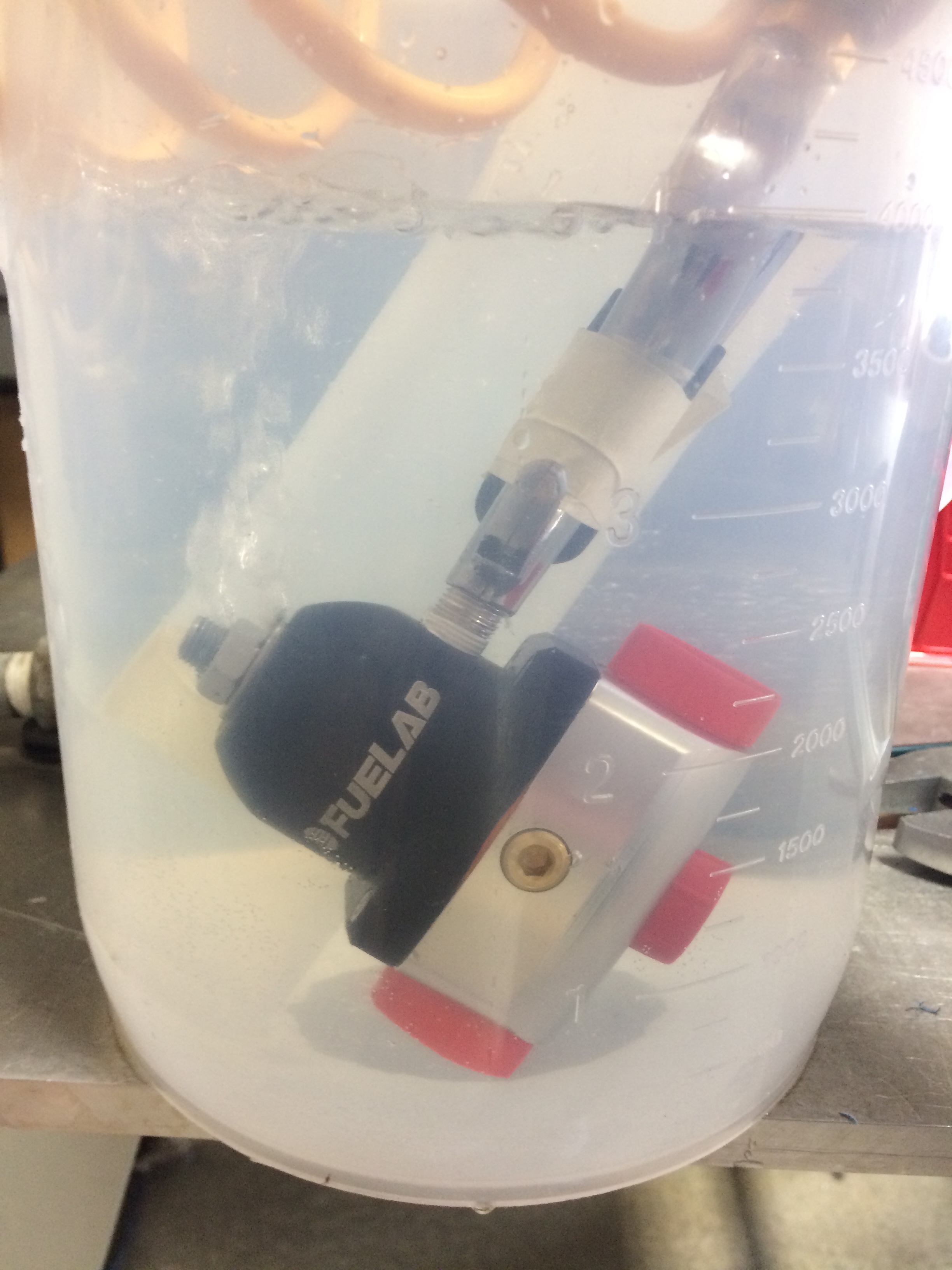Most Adjustable Fuel Pressure Regulators Leak Small Amounts of Air

Most Adjustable Fuel Pressure Regulators leak small amounts of air. Many people don’t realize this. Though this leak is not significant, and ultimately is accounted for when the vehicle is dyno-tuned, it can be helpful to be aware of this condition.
We were recently reminded of this when a customer, who was diagnosing a turbo boost issue, told us he discovered a small amount of air leakage at the regulator where the adjustment screw is threaded into the regulator cover. He thought it was the source of his problem, and that the regulator was defective. We assured him the regulator was not faulty, that most Adjustable Fuel Pressure Regulators leak small amounts of air – no matter which brand it is, and the leak was far too small to create issues. He then went on to find the true source of his problem. This conversation got us thinking it would be informative to explore this phenomenon, put some numbers to it, and report our findings.
Most adjustable Fuel Pressure Regulators have threads in the cover, into which the adjustment screw is inserted. Here small amounts of air blow by can be detected when the pressure reference port is positively pressurized with air - like when the port is plumbed to a turbo charger. Conversely, under vacuum conditions, as when the port is plumbed to the intake manifold, a small vacuum leak can be found at this location. The volume of air leaked is generally insignificant, the amount of leakage is consistent, and once dyno-tuning has been performed (assuming the Reference Port is plumbed) it is accounted for.
For our experiment we used a graduated cylinder to collect and measure the amount of air that leaked through the regulator cover. The leakage was measured as volumetric flow rate; which is the amount of time that it took for a given amount of volume to be displaced. The reference port of the regulator was connected to a compressed air source pressurized to 20 PSI, and the regulator was submerged in water.
*Please note, you should NOT perform this test on your own regulator. Because the cover is pressurized without the fuel pump operating and with an amount of pressure greater than the fuel pressure (zero in this case), the diaphragm can be permanently damaged as it is pressurized in the wrong direction. This can lead to internal leakage that can flood your engine with fuel. If you do perform this test on any fuel pressure regulator be sure to replace the diaphragm assembly afterward.
We conducted four tests. Test 1 shows results when the regulator has been set up to induce the most leakage. Subsequent tests were performed after taking incremental steps to reduce leakage.
Test 1 For Test 1 the adjustment screw was threaded into place, however, the jam nut and washer were left loose with a gap visible. This condition obviously leaked the most at a total of 0.20 CFM.
Test 2 For Test 2 the jam nut and washer were snuggly tightened. This condition leaked less at a total of 0.09 CFM, and would be the amount of leakage typically expected. Test 2 shows the change in leakage is about half as much Test 1. For consistency it would be best to lock down the jam nuts prior to dyno-tuning.
Test 3 For Test 3 Loctite 242 (Blue - Serviceable) was used on the adjustment screw threads and in between the jam nut and washer. This technique sealed the hardware, and thus had a total leakage of 0.0 CFM. Loctite 209 (Green – Penetrating) thread adhesive can be used on assemblies that are already together, thus can be added after final pressure adjustment.
Test 4 After Test 3, the hardware was loosened up and excess adhesive removed. The hardware was still slightly "tacky". This test was repeated to note the difference in flow (such as after making a change in adjustment, when Loctite is used) and the total leakage was only up to 0.03 CFM.
Conclusion Obviously, considering the total capacity of air flow for a typical high performance - high power engine, the amount of leakage being measured is insignificant. At an idle condition, it does become a bit more significant. While it does not impact performance, some people may be particular about taking steps to achieve zero leakage, while others have no concerns and leave the regulator as-is. In any case, it’s best to at least be aware this condition exists.

You must login to post comments.